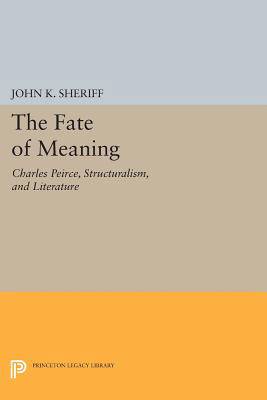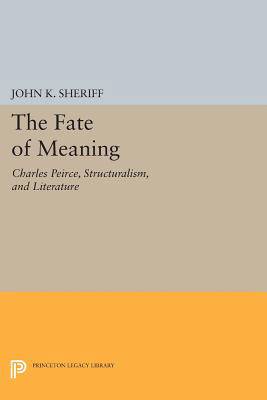
- Retrait gratuit dans votre magasin Club
- 7.000.000 titres dans notre catalogue
- Payer en toute sécurité
- Toujours un magasin près de chez vous
- Retrait gratuit dans votre magasin Club
- 7.000.000 titres dans notre catalogue
- Payer en toute sécurité
- Toujours un magasin près de chez vous
48,45 €
+ 96 points
Format
Description
This succinct and lucid study examines the thought of the philosopher Charles Peirce as it applies to literary theory and shows that his concept of the sign can give us a fresh understanding of literary art and criticism. John Sheriff analyzes the treatment of determinate meaning and contends that as long as we cling to a notion of language that begins with Saussure's dyadic definition of signs, meaning cannot be treated as such any more than can essence or presence. Asserting that Peirce's less familiar position offers a way out of this difficulty, Sheriff first discusses the Saussurean-based theory of meaning and then argues for the advantages of the radically different triadic theory developed by Peirce.
Part One of the work reviews and critiques the treatment of meaning in works by Jonathan Culler, Tzvetan Todorov, Stanley Fish, Roland Barthes, and Jacques Derrida, among others. The focus of this section is on the treatment of meaning in structural and post-structural theories and their common basis in Saussurean linguistics. Part Two provides a readable introduction to Peirce's general theory of signs and develops comprehensively the implications of his semiotic. The substitution of his theory for Saussure's opens our eyes to new and cogent answers to many questions relevant to the meaning of texts. Originally published in 1989. The Princeton Legacy Library uses the latest print-on-demand technology to again make available previously out-of-print books from the distinguished backlist of Princeton University Press. These editions preserve the original texts of these important books while presenting them in durable paperback and hardcover editions. The goal of the Princeton Legacy Library is to vastly increase access to the rich scholarly heritage found in the thousands of books published by Princeton University Press since its founding in 1905.Spécifications
Parties prenantes
- Auteur(s) :
- Editeur:
Contenu
- Nombre de pages :
- 168
- Langue:
- Anglais
- Collection :
- Tome:
- n° 963
Caractéristiques
- EAN:
- 9780691601298
- Date de parution :
- 14-07-14
- Format:
- Livre broché
- Format numérique:
- Trade paperback (VS)
- Dimensions :
- 156 mm x 234 mm
- Poids :
- 244 g







